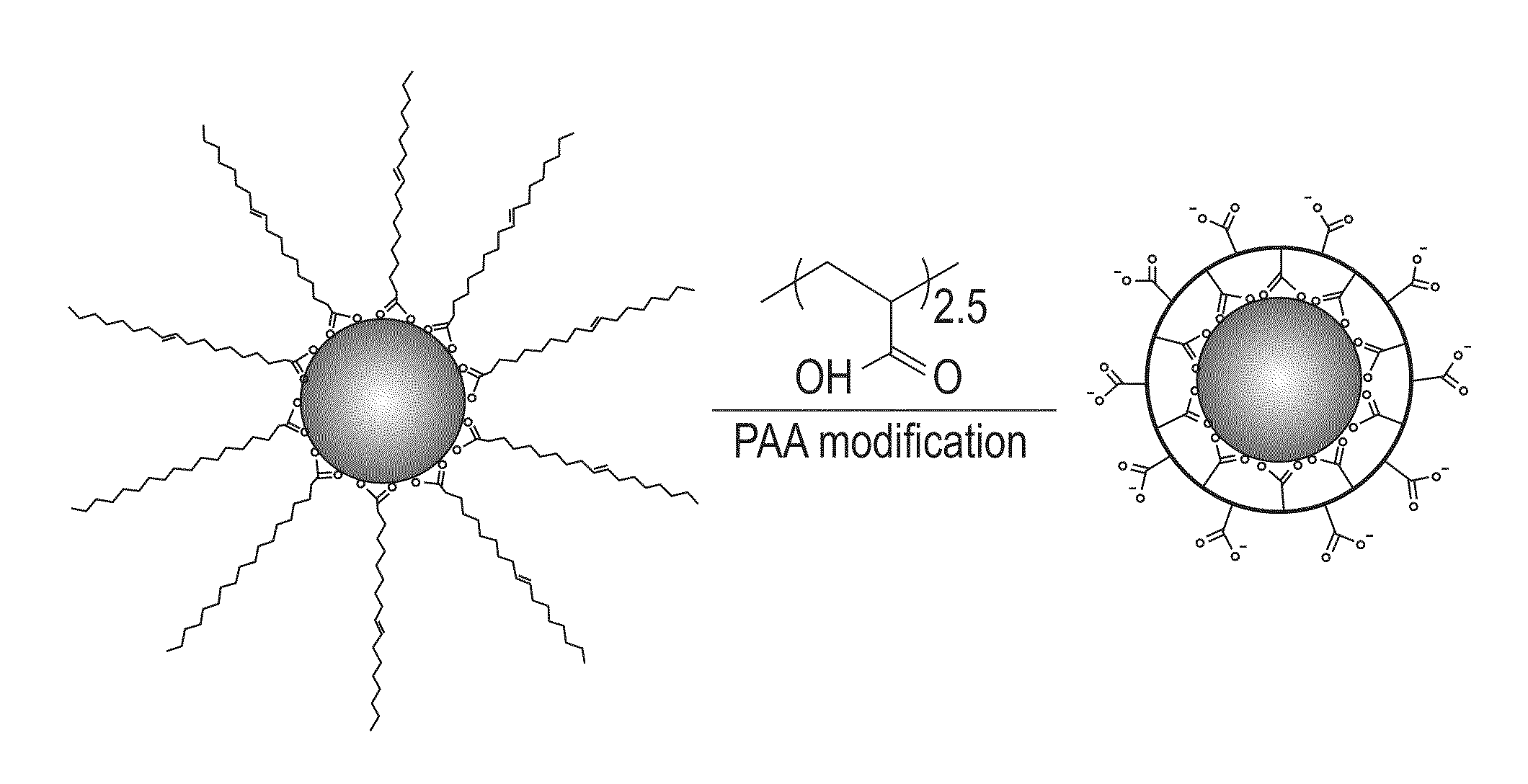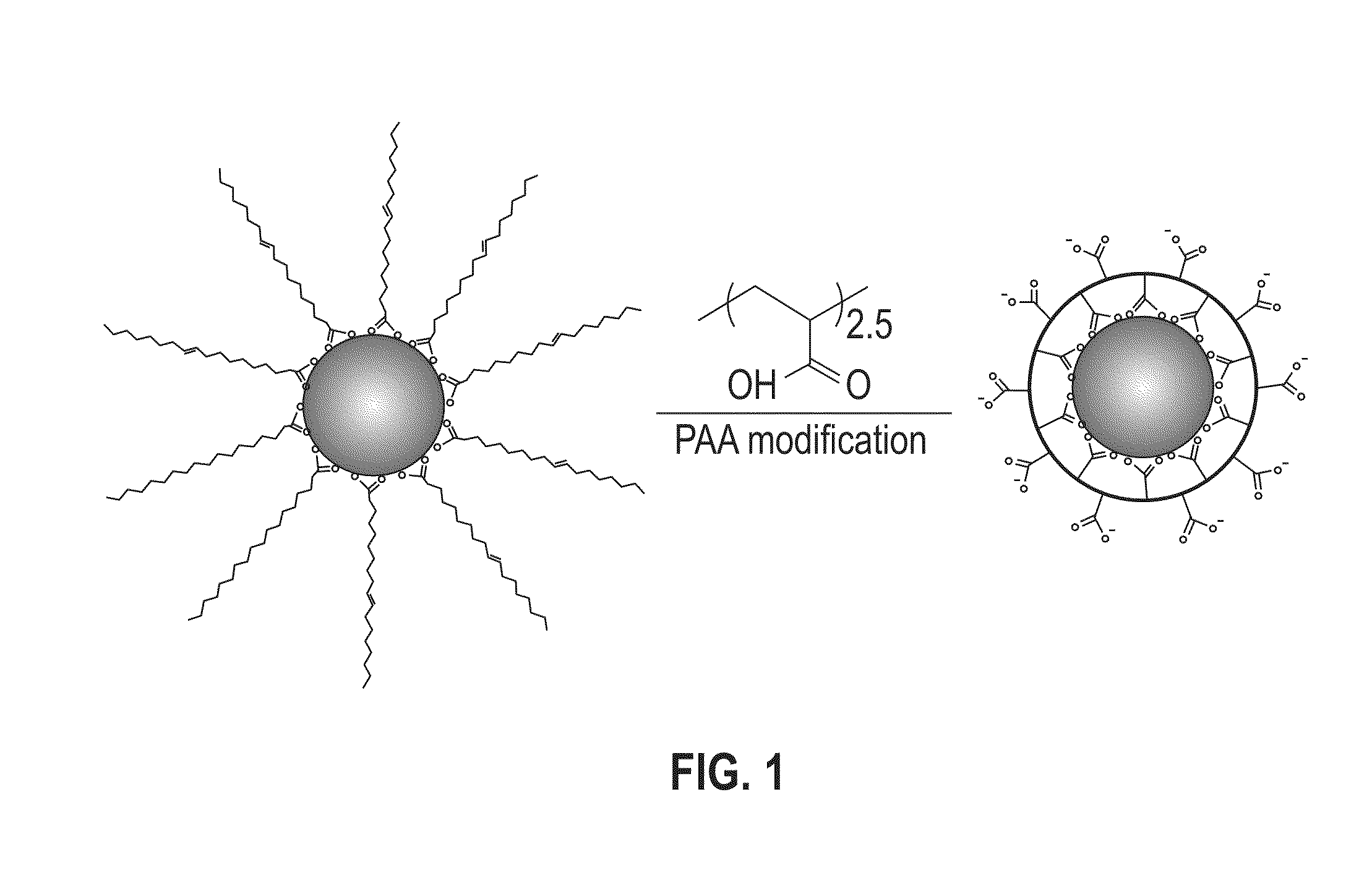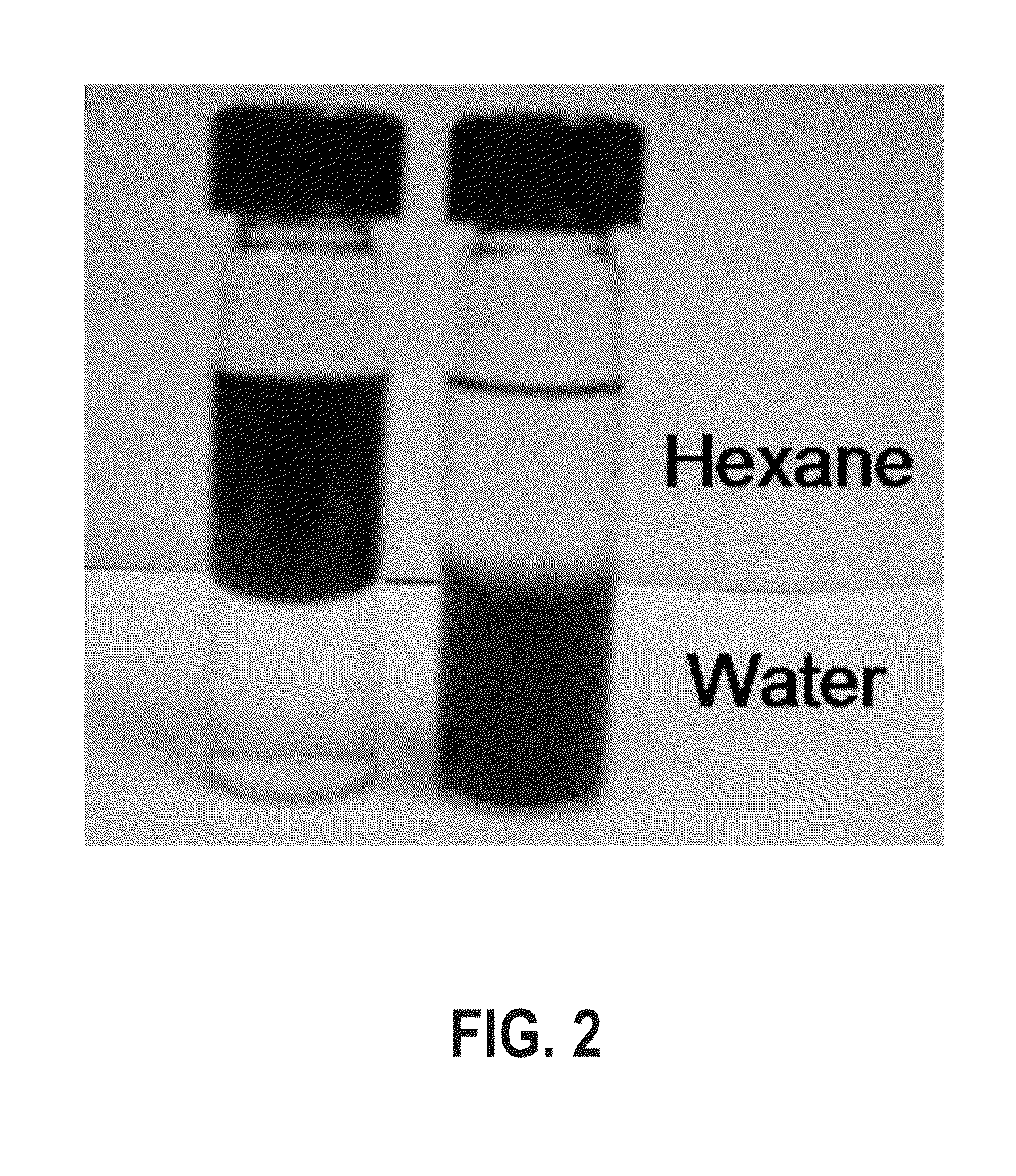Method for silica encapsulation of magnetic particles
a magnetic particle and silica technology, applied in the field of magnetic particle encapsulation silica encapsulation, can solve the problems of poor nanoparticle dispersion in solvents, inability to ensure the successful industrial application of nanoparticles, and inherent aggregation of nanoparticles
- Summary
- Abstract
- Description
- Claims
- Application Information
AI Technical Summary
Benefits of technology
Problems solved by technology
Method used
Image
Examples
example 1
Synthesis of Ferrimagnetic CoFe2O4 Nanoparticles
[0049]Ferrimagnetic CoFe2O4 nanoparticles were synthesized using a modified thermal decomposition method. 2 mmol Fe(acac)3, 1 mmol Co(acac)2, 10 mmol 1,2-hexadecanediol, 6 mmol oleic acid, 6 mmol oleylamine, and 20 mL of benzyl ether were combined and mechanically stirred under a flow of N2. The mixture was heated to 200° C. for 2 h and then, under a blanket of N2, heated to reflux (˜300° C.) for 1 h. The resulting black colored mixture was cooled to ambient temperature. Next, 40 mL of ethanol was added to the mixture and the resulting black material was precipitated and separated via centrifugation at 6000 rpm for 10 min. The black precipitate was dissolved in hexane with 0.1% oleic acid, and the mixture was centrifuged at 6000 rpm for 10 min to remove any undispersed residue. The product was then precipitated with ethanol, centrifuged to remove the solvent, and dried in vacuum overnight. The average diameter of the CoFe2O4 nanopartic...
example 2
PAA Surface Modification of 18 nm CoFe2O4 Nanoparticles
[0052]In a glass container under ambient conditions, 1 mL of PAA in tetrahydrofuran (THF) solution (10 mg / mL) was added to a dispersion of the synthesized 18 nm CoFe2O4 nanoparticles (10 mg in 10 mL) from Example 1. The mixture was shaken for 2 hours with occasional sonication. The modified particles were separated with a magnet and the solvent was decanted. The particles were washed three times with hexane and methanol to remove any free oleic acid and excess PAA polymers. The washed particles were dispersed in aqueous solution by ionizing the carboxylic groups with a dilute NaOH solution.
[0053]FT-IR spectroscopy was utilized to characterize the functional groups present on the particle surface after the PAA ligand exchange. FIG. 6 shows a comparative FT-IR graph of the unmodified and PAA-modified CoFe2O4 nanoparticles. As shown in FIG. 6, the unmodified CoFe2O4 nanoparticles showed strong CH2 bands at 2923 cm−1 and 2852 cm−1 a...
example 3
Silica Coating of PAA-Modified CoFe2O4
[0056]A 1.5 mL aqueous solution of the PAA-modified CoFe2O4 nanoparticles from Example 2 was diluted with 10 mL of ethanol and 400 μL ammonium hydroxide (30 wt %) with vigorous mechanical stirring. A 200 μL TEOS ethanol solution (10 mM) was added to the mixture every 2 h until the total amount of TEOS solution reached 1 mL. After obtaining the desired size, the silica-coated CoFe2O4 nanoparticles were collected by magnetic separation, washed with ethanol three times, and dispersed in ethanol for further characterization.
EXAMPLE 4
Synthesis of Amine-Functionalized Silica-Coated CoFe2O4
[0057]10 mg of the silica-coated CoFe2O4 nanoparticles from Example 3 were dispersed in 8 mL of ethanol. Under vigorous stirring, a 500 μL ammonia (30 wt %) solution was added to the dispersion, followed by the addition of 100 μL 3-aminopropyltrimethoxylsilane (APTMS). The mixture was stirred at room temperature overnight. To enhance the covalent bonding of APTMS g...
PUM
| Property | Measurement | Unit |
|---|---|---|
| diameter | aaaaa | aaaaa |
| thickness | aaaaa | aaaaa |
| shell thickness | aaaaa | aaaaa |
Abstract
Description
Claims
Application Information
 Login to View More
Login to View More - R&D
- Intellectual Property
- Life Sciences
- Materials
- Tech Scout
- Unparalleled Data Quality
- Higher Quality Content
- 60% Fewer Hallucinations
Browse by: Latest US Patents, China's latest patents, Technical Efficacy Thesaurus, Application Domain, Technology Topic, Popular Technical Reports.
© 2025 PatSnap. All rights reserved.Legal|Privacy policy|Modern Slavery Act Transparency Statement|Sitemap|About US| Contact US: help@patsnap.com



